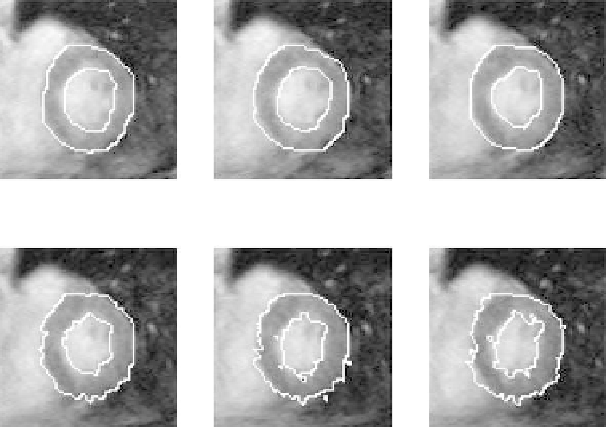Graphics Reference
In-Depth Information
Theorem
1
UnderModel(
.
)andCondition
, E
[
x
(
t
)
y
(
t
)]−
E
[
x
(
t
)]
fallswithin
1
thelinearsubspacespannedbyCov
(
x
(
t
))
β
k
for any t, k
=
,
, K.
iselliptically symmetric forany time t,the above condition is fulfilled.
his condition is weaker than the assumption of elliptical symmetry for
x
When
x
(
t
)
.When
this condition is violated, the biases involved with estimating the projection direc-
tions are not large, as discussed in Li (
,
). Because the model (
.
) does
not consider any structural changes over time, successive data can be pulled together
to estimate the projection directions more effectively, so long as the projection di-
rections remain the same. Furthermore, all of the existing properties for SIR can be
passed on to this dynamic model without any di
culty, so this model is called the
dynamic SIR (DSIR) model.
hetechniqueofMRimaginghasbecomewidelyusedasadiagnosistooldueto
thehigh-quality sottissuecontrast ityields,itsnoninvasiveness anditsfunctionality.
Itisnecessarytoidentifycomponentsthatcorrespondtodifferenttypesoftissuesand
structures with computers automatically. For example, human brain tissues can be
classifiedintothreetypesbyMRimages:graymatter,whitematter,andcerebrospinal
fluid(CSF).heperformanceoftheDSIRmethodwhenappliedtoasequence ofMR
images of the epi- and endocardial surfaces of myocardium is a good example. Since
the heart is an organ that exhibits motion, examining its image characteristics with
a sequence of
-D images leads to useful information about its physical condition.
he goal in this experiment is to extract the boundary description for the inner and
(
t
)
Figure
.
.
Segmentation results are displayed for a sequence of MR images of myocardium in the
space domain. he top three images display classification results and the bottom three images show
prediction results


